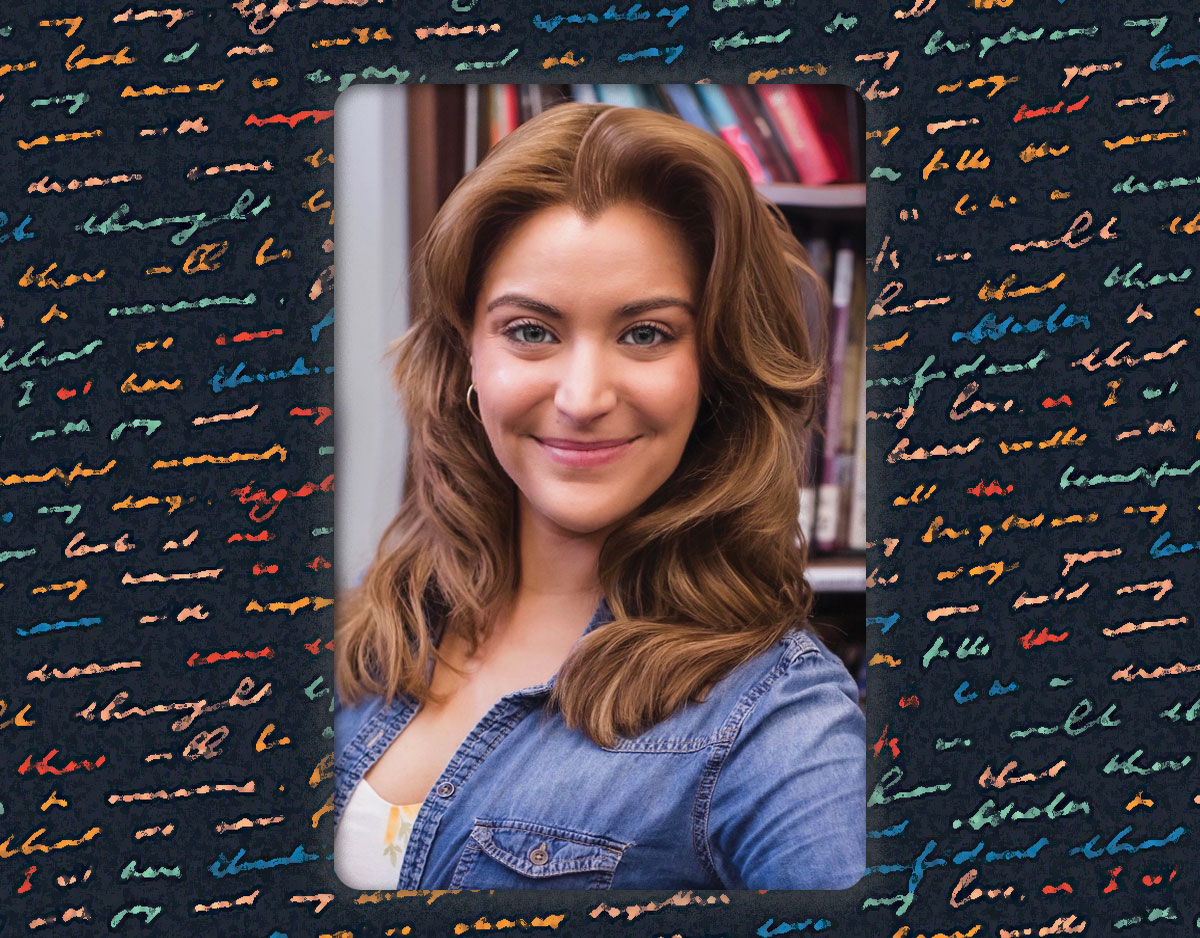Students Thrive in Poetry Immersion Program
A collaboration among a middle school librarian and her English teacher colleagues sparked student creativity and a passion for poetry.
 |
Kasey Kelly |
When Kasey Kelly was looking for a way to help students explore their creativity, she turned to rhythm, rhyme, and iambic pentameter.
The library media specialist at Smith Middle School in Ramsey, NJ, developed a Poetry Immersion program with the seventh grade English teachers.
“We noticed that students were struggling in areas of analytical writing and figurative language concepts,” Kelly says. “We wanted more creative writing opportunities for students in an authentic way to present a wide range of author voices and diversity.”
The educators decided to focus on poetry, because they shared a passion for it and noticed it wasn’t explicitly in the curriculum.
“I remembered as a student, I really enjoyed having poetry in my curriculum and learning about it,” Kelly says.
When they launched the program in 2022, it was a one-week workshop focused on the basic elements of poetry—mood and tone, rhyme schemes, how reading a poem is different from reading a book written in prose—and included workshop stations where students wrote their own poems.
All seventh grade English classes came into the library at once, “which was a lot of bodies, and a lot of moving pieces, but it was exciting because they never all get to be together.”
Kelly wasn’t sure how students would react. Some of them “looked at me like I had three heads when I started talking about poetry.” But she was encouraged by their willingness to try. She told them, “No one’s saying that you need to be a Pulitzer Prize–winning poet tomorrow. But the fact that you’re putting yourself out there, that you’re trying, that you’re willing to take risks, that you’re willing to give it a shot and try something out, that’s what’s most important.”
At the end of that first week, the English classes held a “coffee shop event” and invited students to recite their poetry aloud. Even some of the shy students were willing to read their work, Kelly says. One girl read a “beautiful poem about needing to take action for climate change.”
“I was like, ‘I don’t think you’ve spoken two sentences this year. Where did this come from?’” Kelly says.
Students kept asking for more poetry, and she and the teachers found it hard to cover everything in one week. So last year they expanded Poetry Immersion to a monthly program, in which Kelly visits the classrooms to co-teach for a day.
“Students have gotten even more chances to try some different types of poetry,” she says. “We recently did a unit on sonnets, and I have a girl who now comes every day during recess to recite a different sonnet to me. I have kids who walk up to me and try to count out their sentence in iambic pentameter.”
Kelly gives students a variety of material in the workshop, including Langston Hughes, Gwendolyn Brooks, and Maya Angelou, as well as contemporary poets. She likes the spoken word on the Button Poetry website, “because there are so many young poets there.” She also includes Amanda Gorman, because “I’m a big fan of ‘The Hill We Climb,’” and Rupi Kaur, because many students are intrigued by being an “Instagram poet.”
“I try to give them a little bit of everything and show them poetry has evolved over time,” says Kelly.
She is proud when students say the program was a highlight of their school year. One student about a year ago was struggling in ELA and didn’t have much interest in class discussions until the poetry lessons.
“All of a sudden, you could not get her to stop participating,” says Kelly. “She was engaged, she was contributing, she was furiously writing poems every day in a journal. Her parents reached out to me that she was asking for poetry books for Christmas that year. She was in the library constantly getting poetry books.”
And the effect lasts beyond middle school. The teacher at Ramsey High School’s Poetry Out Loud program has told Kelly more students come in excited and knowing about poetry, saying, “‘Ms. Kelly already told us about this poem. I love this poet,’” Kelly says.
She hopes to keep Poetry Immersion as a full-year program and eventually expand it to other grade levels.
She thinks poetry appeals to students because they can connect to it, and it is open to interpretation. According to Kelly, students initially respond to discussion questions hesitantly, asking if their answer is correct after giving it. She tells them it is the right answer “because that’s what you see in the poem. Can you back it up with a quote?”
The students get excited, she says, when they realize there are no wrong answers as long as they can support their response with the poem.
“I think that really speaks to them,” she says, “because everyone can read the same poem, and we walk away with 20 different meanings…how we feel about it, what it makes us think of, what it reminds us of. And I think that’s unique to poetry.”
Marlaina Cockcroft is a freelance writer and editor.
The job outlook in 2030: Librarians will be in demand
The job outlook in 2030: Librarians will be in demand
ALREADY A SUBSCRIBER? LOG IN
We are currently offering this content for free. Sign up now to activate your personal profile, where you can save articles for future viewing






Add Comment :-
Be the first reader to comment.
Comment Policy:
Comment should not be empty !!!